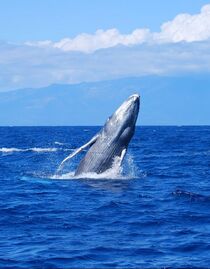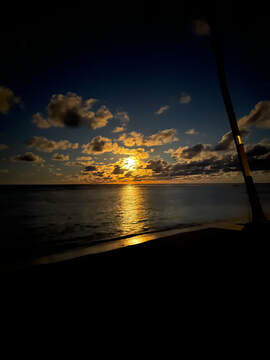Another new year and another new virus! “Good grief!” as Charley Brown used to say. Nevertheless, we will power on and greet 2022 with grateful and hopeful hearts. It is still winter, which is a lovely time of year, the full moon over the ocean is glorious, and the humpback whales have arrived in Hawaiian waters after their long migration south from the icy waters of Alaska. Let’s enjoy the quiet serenity of the post-holiday season and nurture ourselves with the pleasures of solitude, healthy food and the eternal joy of Afternoon Tea.
Now is the time to enjoy Tea for One, those holy moments in the late afternoon, when, utterly alone, we create an environment of stillness and gentle beauty for reflection and renewal as we prepare for the evening and the year ahead.
To help you reclaim the aesthetics of serenity, I invite you to review the shortest chapter in this website, “Tea for One,” in the Afternoon Tea for Special Occasions section of The Tea Book. This brief chapter reminds us that The Philosophy of Tea applies even if we are sitting alone drinking a cup of tea. This brief ceremony is, in itself, a special occasion and deserves the careful attention to detail and sensitivity to the season that we would apply to a larger gathering of several friends. Remember, you are the guest of honor at this event, and as the host as well, you will need to turn your attention to selecting an appropriate location, adding flowers or other decorations to create a pleasant environment, setting an attractive table and choosing an appropriate beverage and light savory and sweet snacks to complete the experience.
Today, I am thinking of enjoying a cup of Gokujo Hojicha from the Ippodo Tea Company of Kyoto, a gift from our friend Yuki Handa, who lives in Tokyo. This pure green Japanese tea will be perfect in my old brown floral teapot given to me and my husband years ago by his sister, Kathy. I will be sitting at my round, glass-topped table, gazing out at sea.
A slight chill is in the air on the normally warm Oahu coast, and I am reminded of the exquisite winter poems of the greatest haiku writer of all time—Matsuo Basho. I will reflect with gratitude on all the things I learned from him, and smile at the thought that I consider him a dear friend although he was born exactly three hundred years before I was, in another country and spoke and wrote in a completely different language.
I will decide to merge cultures by placing my teapot and cup on an old white linen place mat from a set my parents gave me after a trip to Ireland. And before my first sip of hot, pleasantly bitter tea, I will think about Basho’s concept of sabi, described by his translator and my professor, Dr. Ueda. “…one attains spiritual serenity by immersing oneself in the ego-less, impersonal life of nature.” This idea of sabi has also been described as a kind of delicious, impersonal loneliness or solitude, so beautifully manifested in Basho’s wild duck poem.
After all the fabulous foods I have enjoyed at the Thanksgiving, Christmas and New Year celebrations, I will choose something lighter for my Tea for One, party, although two of us or perhaps three are here, as I have invited Matsuo Basho and Professor Ueda to join me. I am thinking of a delightful cracker or cookie combination that I have recently discovered, Coastal Crisps. This thin, crispy snack contains both sweet and savory elements and is packed with nutrition. Although these amazing crackers are available commercially as Lesley Stowe Raincoast Crisps, I have made them myself and renamed them Coastal Crisps. They contain a marvelous combination of dried fruits, seeds and nuts bound together by a light batter of buttermilk and honey, creating a little meal that is both simple and complex, plain and fancy, humble and elegant. I think Basho will love them!
Coastal Crisps

My friend and neighbor, Pearl Yee, gave me the recipe for these marvelously tasty and wholesome crackers. Apparently, her friends shared this recipe with her, and now all her friends are baking and sharing them. I admit that Coastal Crisps are addictive. I have shared two or three batches already with my niece and co-author Kathleen, for Thanksgiving, Christmas and her December birthday, and she loves them more than the fabulous Christmas cookies for which she is justly famous. They are also easy to make and store in the freezer to be baked on short notice for impromptu wine (or tea) and cheese gatherings. Coastal Crisps are made like Biscotti, baked twice, first in loaf pans and frozen, and secondly, sliced and baked on cookie sheets, and turned over in the middle of the baking time to insure crispness.
The procedure for making Coastal Crisps is fairly simple, and the baker has a lot of leeway in selecting the various types and even amounts of dried fruit, seeds and nuts to include. I have found only two challenges in producing these perfect little crackers. First, the frozen loaves must be sliced very thin, which can be tricky. You must give the loaf a few minutes out of the freezer to soften just a bit, but not too much, so you can make perfect slices. This is my husband Wayne’s job. He uses his electric meat slicer, but sometimes the motor starts to overheat as he presses the knife through the hard loaf. You can certainly just use a sharp serrated knife if you prefer. Secondly, here in Hawaii, the perpetual humidity of the air causes the Coastal Crisps to get soggy within a day or two, even if they are nice and crunchy when they come out of the oven. We have simply resorted to popping them into the oven for a third time to warm and re-crisp them shortly before serving time. Once, baked and cooled, they should be stored in air-tight metal containers.

- 2 cups flour
- 2 teaspoons baking soda
- ½ teaspoon salt
- ¼ cup brown sugar
- 1 cup pumpkin seeds
- ½ cup sesame seeds
- ½ cup flax seeds
- 1 cup roasted unsalted sunflower seeds
- 1 cup whole almonds
- ½ cup pistachios
- ½ cup chopped walnuts or pecans
- ½ cup dried cranberries
- ½ cup raisins
- ½ cup dried cherries or currants
- 2 cups whole dried, figs, stems removed (to be added to the dough in the loaf pans just before baking)
- 2 cups plus 2 tablespoons buttermilk (If you don’t have buttermilk, just add 2 tablespoons of vinegar to 2 cups of whole milk.)
- ¼ cup honey
- Soft butter or cooking spray for the loaf pans
Makes: approximately 8 dozen Coastal Crisps
Preheat oven to 350° F
- Pour the buttermilk into a 2-cup measure and allow it to come to room temperature. Grease 3 loaf pans carefully with soft butter or cooking spray and set aside.
- In a large mixing bowl, thoroughly whisk together the dry ingredients. In order, add the seeds, nuts and dried fruit, except the figs, stirring with a spatula just until evenly blended.
- Pour the buttermilk over the flour and fruit mixture without stirring. Pour the honey over the buttermilk. Fold with the spatula just until blended, but do not beat. The mixture will be thick.
- Distribute the batter evenly among the 3 prepared loaf pans. Press the whole figs down the center of each loaf until they are covered with dough. Place the loaves in the pre-heated oven for about 40 minutes until a light golden brown. Remove the loaves from the oven.
- Cool on wire racks for 10 minutes. Then carefully remove the loaves from the pans and cool completely on the wire rack. When the loaves are completely cool, wrap them in plastic wrap, return them to the loaf pans and freeze them for at least two hours. Frozen loaves can remain in the freezer for several weeks.
- When ready to make the Coastal crisps, pre-heat the oven to 300 F, remove a loaf from the freezer and allow it to soften for about 5 minutes. Place the loaf on a cutting board and slice it into very thin and even slices using a sharp serrated knife or an electric carving knife. Place the slices on a parchment-lined cookie sheet.
- Bake the Coastal Crisps for about 15 minutes; then flip them over with an offset spatula and bake for another 10-12 minutes until they are crispy and a light golden brown. Do not over-bake. Cool on the wire rack, and when completely cool, store in air-tight containers.











 RSS Feed
RSS Feed